
Setup and test results …
For the performance assessment, we use the 3D Mark Time Spy benchmark for testing the raster performance and the 3D Mark Steel Nomad benchmark for testing the ray tracing performance. On the OC Software Download page you will find all the important benchmark tools for download and can then share and compare your own benchmark scores right here under benchmark results.
The ASRock RX 9070 XT Taichi is delivered ex works with an increased power limit of 340W, compared to the AMD factory specification of 304W. This is also accompanied by a higher maximum boost frequency of up to 3100MHz on the ASRock card, compared to the AMD reference design with 2970MHz. We can therefore assume good test results for the RX 9070 XT Taichi, but we’d rather check that first. Before we dive into the benchmarks, however, we check whether any thermal limits or similar problems could distort the results in longer tests, but a longer run of Furmark certifies the ASRock RX 9070 XT Taichi good vital values, even if the hotspot temperature is relatively high with a difference of 35°C to the GPU temperature.
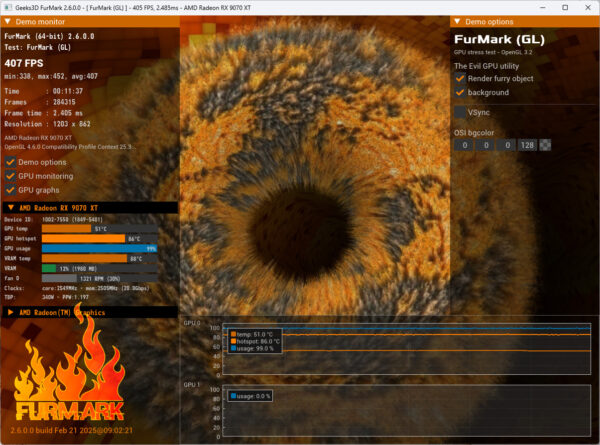
Benchmark results standard …
Without overclocking, the ASRock RX 9070 XT Taichi achieves 30686 graphics points in the 3D Mark Time Spy.
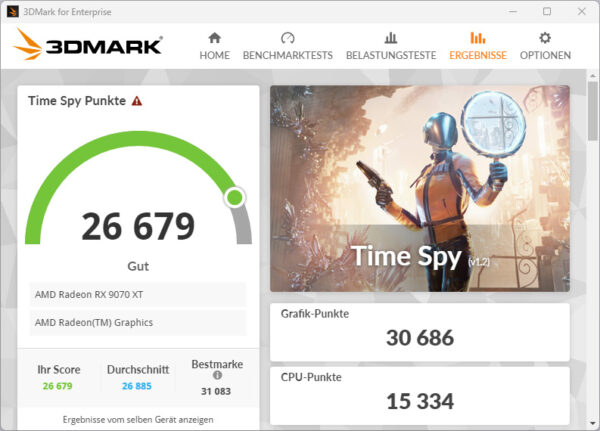
In the Steel Nomad ray tracing benchmark, 7201 points are achieved.
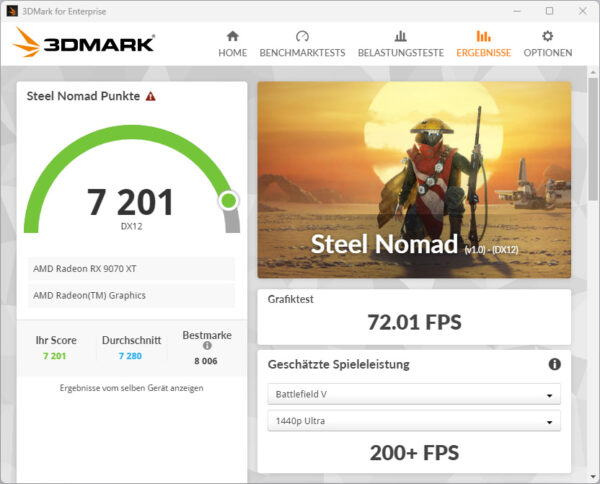
After the benchmarks, we again see a maximum temperature difference of 35°C between the GPU and hotspot temperature. The maximum power of 340W was fully utilized and the maximum clock frequency was 3026MHz, which is a remarkably high value in the demanding tests, even if the limit of 3100MHz was not reached.
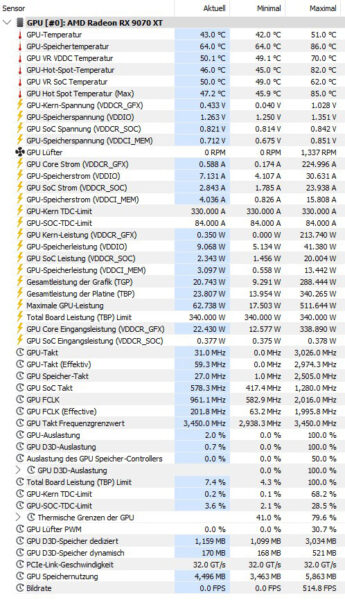
Benchmark results overclocked …
We then overclocked the ASRock RX 9070 XT Taichi to the limit and ended up with the following values. Of course, we increased the power limit to the maximum of +10%. We increased the clock frequency of the GPU by 150MHz and at the same time lowered the voltage by 80mV. In addition, we increased the memory clock from 2500MHz to 2780MHz and activated the fast memory timings.
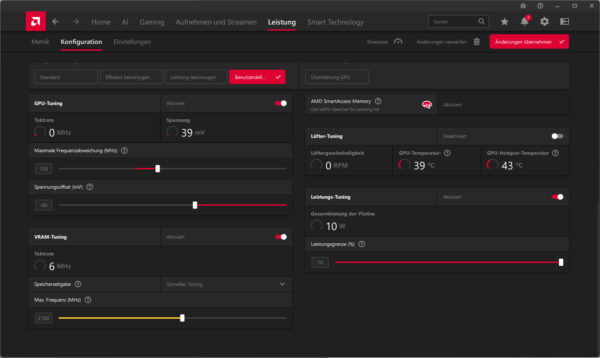
With the tuned values, the ASRock RX 9070 XT Taichi now achieves an impressive 33040 points in Time Spy, which corresponds to an increase of 7.7%.
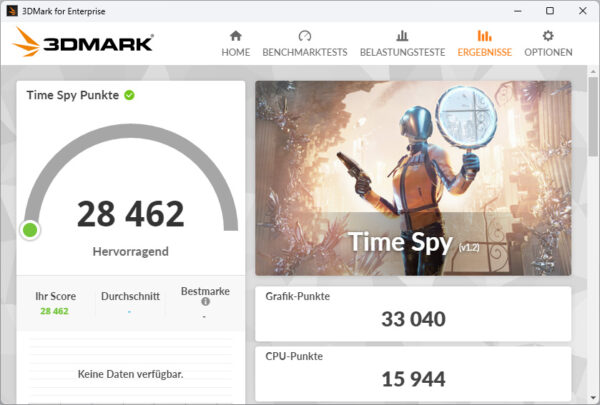
The result in the Steel Nomad benchmark is even more impressive. There, the result rises to a fantastic 7850 points, which corresponds to an increase of 9%. The point distribution curve in 3D Mark reveals that there are hardly any other RX 9070 XT cards that have achieved such a high result so far, making the ASRock RX 9070 XT Taichi one of the fastest RX 9070 XT cards.
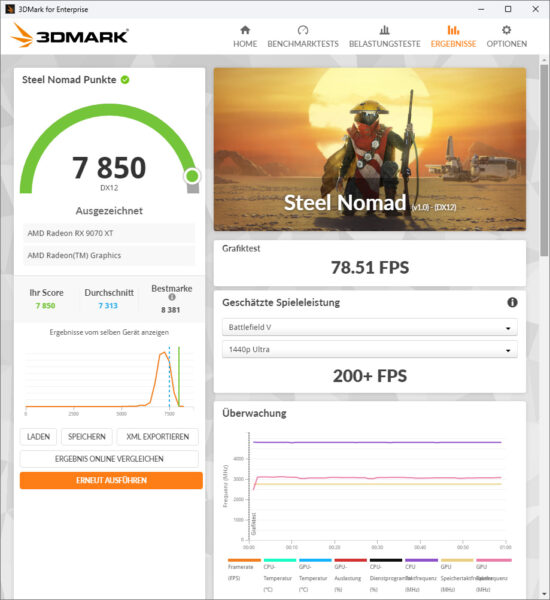
The sensor data shows interesting values in the overclocked state. The temperature only rose by 2°C, although the fan speed remained practically the same and the card now claimed 374W for itself. The maximum clock frequency also increased to an excellent 3112MHz.

Benchmark results reduced performance …
However, you can also optimize and tune a graphics card with a reduced performance limit. It makes sense to reduce the maximum power consumption of the card, especially if low noise development is important or if the card is used in a particularly small housing where ventilation is restricted and little heat can be dissipated. In this case, we have left the clock frequencies of the GPU and memory at the factory settings, but reduced the voltage and limited the power limit. The first attempt is made with a power limit of -30% and the voltage is reduced by 70mV.
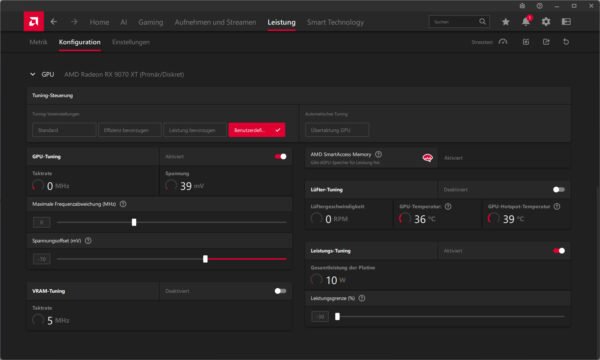
In Time Spy, the card achieves an incredible 29259 graphics points with maximum power reduction, which corresponds to just over 95% of the score in the delivery state, but requires a whopping 102W less electrical power at 238W.
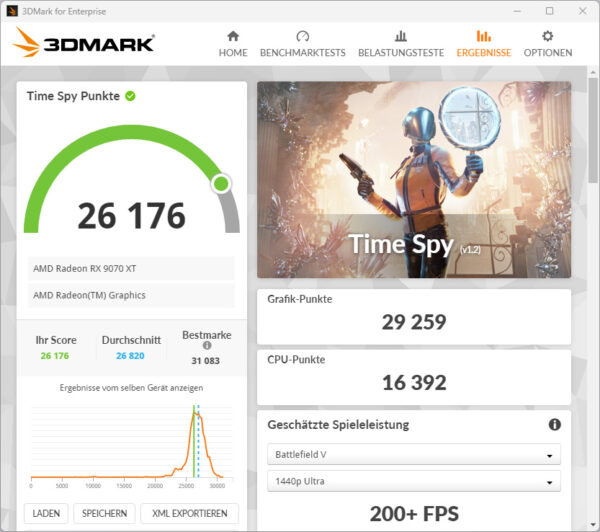
The result in Steel Nomad is no less impressive. In this test, too, more than 95% of the delivery status points are achieved with 6871 points. The positive side effect is that the fans of the ASRock RX 9070 XT Taichi are now barely perceptible, as they only rotate very slowly.
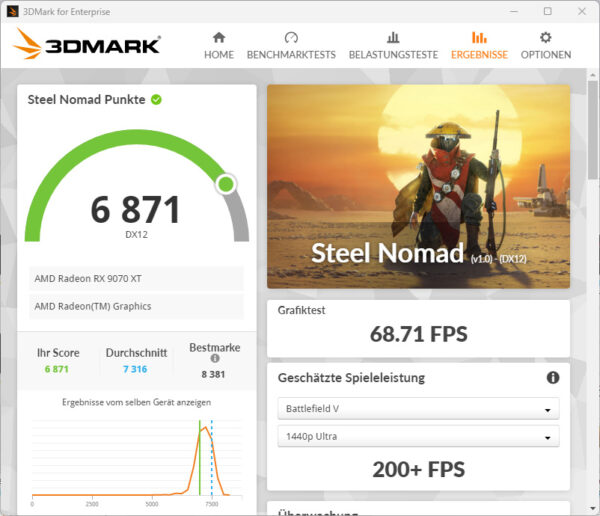
Benchmark results optimized …
A good balance between reduced power consumption and performance is provided by a reduced power limit of 15% including undervolting by 70mV. With 30624 points in Time Spy, the series performance is practically achieved with 15% lower power consumption.
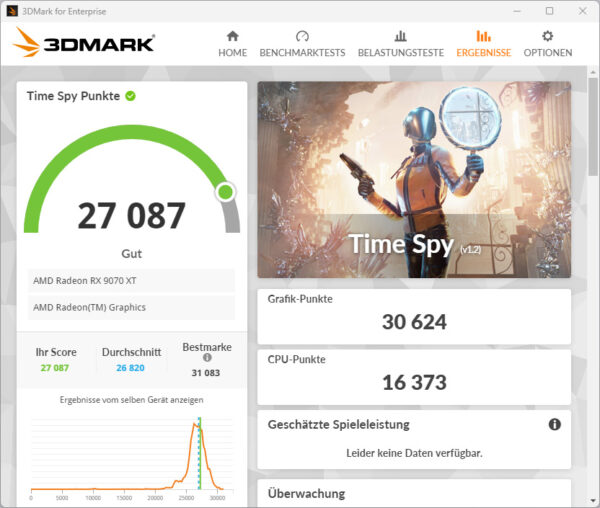
With 7170 points (99.6% of the initial value), Steel Nomad is also practically tied.
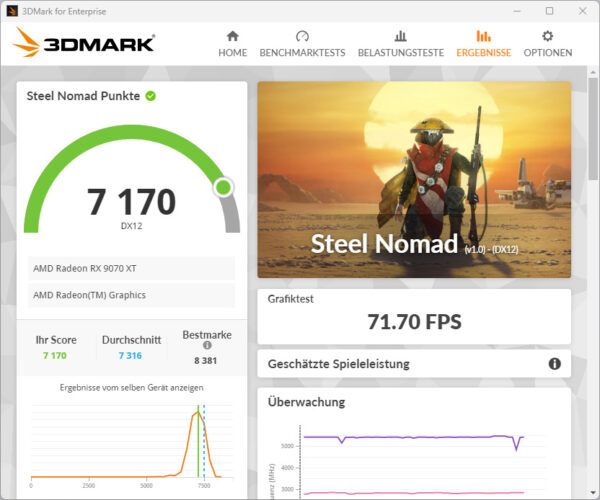
Volume …
It is impressive how well the ASRock RX 9070 XT performs. If you raise the power limit by 10%, you also get 10% more performance compared to the standard values if you invest a little time in tuning the card. Fortunately, the card remains surprisingly quiet even at full power of 374W. The ASRock RX 9070 XT Taichi is barely perceptible from a closed case. There is no question of any noticeable noise. Even more impressive is the performance with reduced power limit. You get 95% of the output power with 30% (102W) less power consumption and then the card is impossible to hear from a PC unless you are running a passively cooled CPU and not using a case fan. Coil whine can occur under certain loads, but this is more of a rattling noise than a whistling sound and is not particularly annoying unless you are intent on hearing it.
ASRock RX 9070 XT Taichi power consumption …

